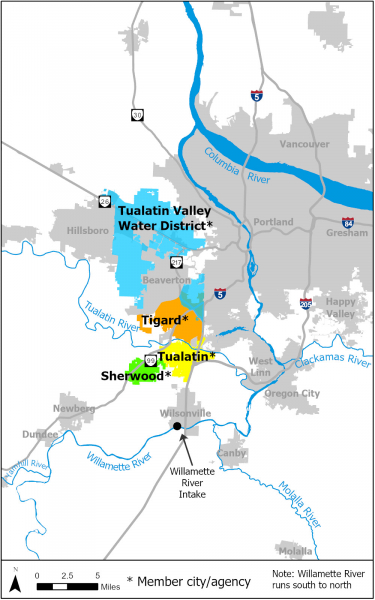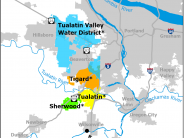The Willamette River
 The Willamette River has played an invaluable role throughout its history as a significant source of food and cultural importance for the indigenous peoples of the region. It is cherished by the millions of people throughout the Pacific Northwest who have come to appreciate the river’s beauty, wildlife habitat, and role as a critical natural resource. Taken together, the river and its multiple tributaries form the Willamette River Basin, which contains nearly seventy percent of Oregon’s population.
The Willamette River has played an invaluable role throughout its history as a significant source of food and cultural importance for the indigenous peoples of the region. It is cherished by the millions of people throughout the Pacific Northwest who have come to appreciate the river’s beauty, wildlife habitat, and role as a critical natural resource. Taken together, the river and its multiple tributaries form the Willamette River Basin, which contains nearly seventy percent of Oregon’s population.
The Willamette River is Oregon’s largest river and, by volume, is the 13th largest river in the United States. The Willamette River Basin is over 180 miles long and is unique among the nation’s river systems in that it flows from the south to the north. The river originates in the central Cascade Mountains of western Oregon and joins the McKenzie River near the City of Eugene. It then flows northward, past the cities of Harrisburg and Corvallis.
After being joined by the Santiam River near Albany, the river continues past the cities of Independence, Salem, Newberg, and Wilsonville. This stretch of the Willamette River, generally referred to as the Mid-Willamette, is where the intake serving the City of Sherwood and eventually TVWD is located. The shared intake is currently operated by the City of Wilsonville and will be used by additional local governments in 2026 under the newly formed Willamette Intake Facilities Commission.
After passing the City of Wilsonville and reaching the City of Oregon City, the Willamette River tumbles over Willamette Falls, an important cultural landmark for the indigenous tribes of the Pacific Northwest. It then passes through the City of Portland before joining the Columbia River, which eventually makes its way to the Pacific Ocean.
Sources:
https://www.oregonencyclopedia.org/articles/willamette_river/

